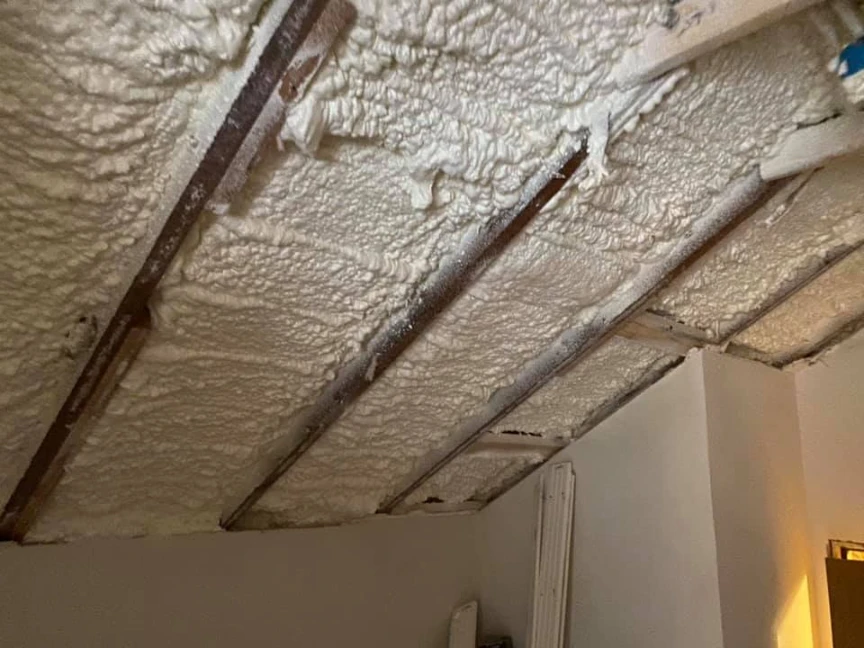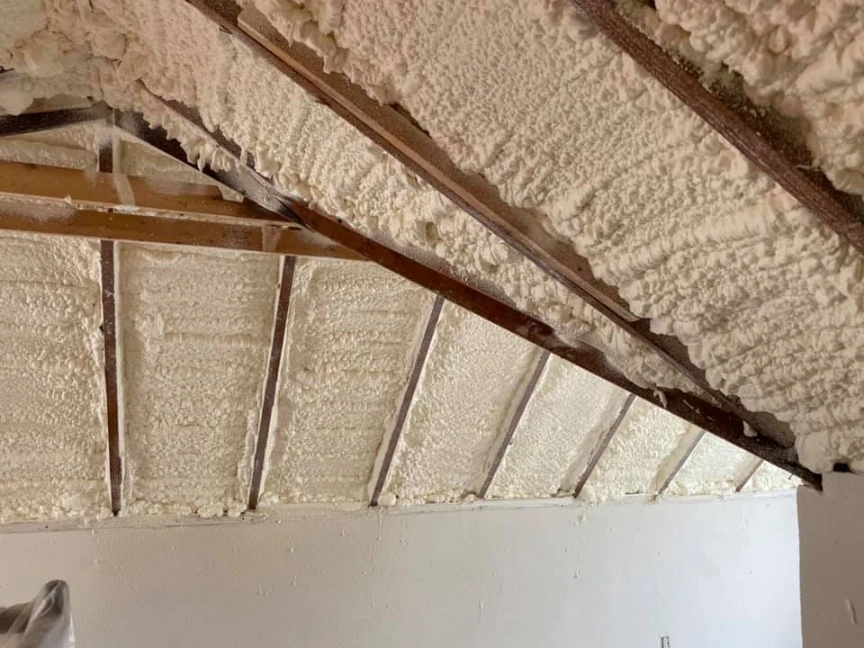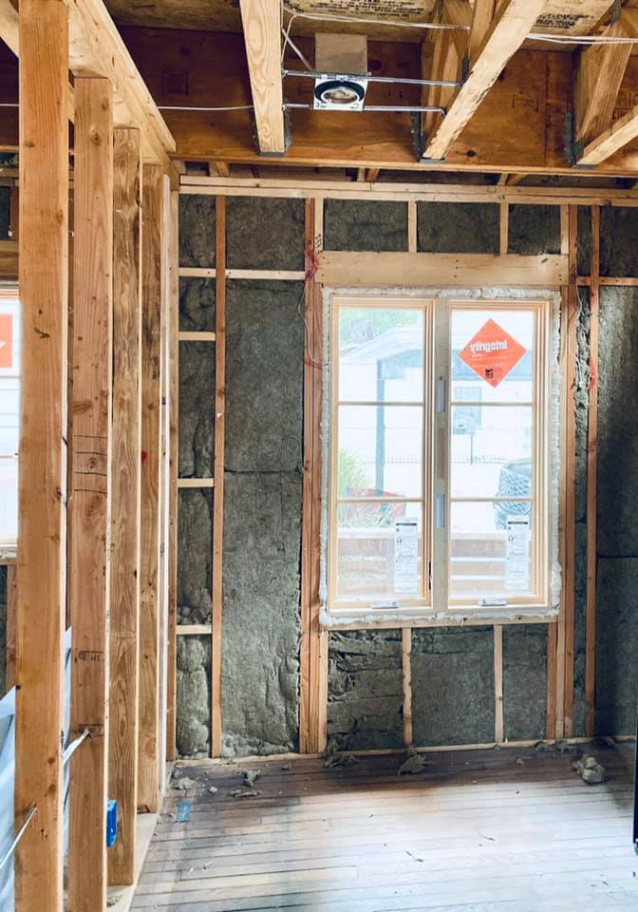Achieving the optimal R-value in a commercial property is about creating a complete thermal envelope, not just installing insulation with a high number on the label. The most effective strategy involves selecting the right type of insulation for your specific climate zone, ensuring meticulous air sealing to prevent energy loss, and matching the material to the building’s intended use. A high R-value product is only as good as its installation; gaps, compression, and air leaks can drastically reduce its real-world performance.
This guide explains the practical steps for developing an effective insulation plan for a commercial building. The information is based on direct field experience managing complex commercial spray foam insulation projects, from large warehouses to multi-story office buildings. It moves beyond product specifications to focus on the application details that determine long-term energy efficiency and operational savings.
Understanding R-Value Beyond the Numbers
R-value measures an insulation material’s ability to resist heat flow. The higher the number, the better its insulating power. However, the R-value printed on a product’s packaging, known as its nominal R-value, can be misleading. The true performance, or effective R-value, of your building’s insulation depends entirely on how it’s installed and works as part of a system.
Factors like thermal bridging, where heat bypasses insulation through framing studs, and air leakage are the primary culprits that undermine insulation. Air moving through small gaps can carry significant amounts of heat with it, rendering a high R-value insulation ineffective. For this reason, an insulation’s ability to stop air movement is just as important as its stated R-value.
Bonus Tip: An insulation with a slightly lower R-value that provides a superior air seal, like closed-cell spray foam, will almost always outperform a higher R-value insulation that is installed with even minor gaps or seams.
Selecting the Right Insulation for Your Climate Zone
The amount of insulation a commercial building needs is dictated by its location. Building codes, largely based on the International Energy Conservation Code (IECC), provide minimum R-value requirements for different climate zones. The Building Codes Assistance Project offers detailed summaries of these requirements, showing how they differ from state to state. For instance, a report from the U.S. Department of Energy provides specific recommendations for roofs, walls, and floors to ensure buildings are properly equipped for their environment. Properties in colder northern zones need much higher R-values than those in warmer southern zones like Texas.
Below is a general guide for recommended R-values in new commercial construction, though local codes should always be consulted.
| Building Area | Climate Zone 2 (e.g., Houston, TX) | Climate Zone 3 (e.g., Dallas, TX) | Climate Zone 4 (e.g., Northern Panhandle) |
|---|---|---|---|
| Roof | R-25 to R-38 | R-30 to R-49 | R-38 to R-60 |
| Walls (Wood-Framed) | R-13 to R-20 | R-13 to R-21 | R-20 to R-21 |
| Walls (Steel-Framed) | R-13 + R-5 ci | R-13 + R-7.5 ci | R-13 + R-10 ci |
| Floors | R-13 | R-19 | R-25 to R-30 |
| Note: “ci” refers to continuous insulation installed on the exterior of the studs to reduce thermal bridging. |
Common Insulation Types for Commercial Buildings
Choosing the right material is a balance of performance needs, budget, and building design.
- Spray Polyurethane Foam (SPF): Excellent for creating a seamless air and moisture barrier. Closed-cell SPF has a high R-value per inch (around R-6.5 to R-7) and adds structural strength. Open-cell SPF is less dense, has a lower R-value (around R-3.5), but provides great sound attenuation. The demand for materials like spray foam continues to grow in commercial applications due to its dual thermal and air-sealing benefits.
- Rigid Foam Boards: Materials like Polyisocyanurate (Polyiso), Extruded Polystyrene (XPS), and Expanded Polystyrene (EPS) are often used for continuous exterior insulation and roofing. They offer consistent R-values but require careful sealing at the seams to prevent air leakage.
- Mineral Wool: Made from rock and slag, mineral wool offers exceptional fire resistance and soundproofing qualities. It is often used in fire-rated walls and around mechanical rooms.
- Fiberglass: Available in batts and loose-fill, fiberglass is a common and affordable option. However, it is susceptible to losing R-value if compressed or exposed to moisture.
The Critical Role of Air Sealing
No amount of insulation can work effectively in a leaky building. Air infiltration and exfiltration can account for a substantial portion of a building’s heating and cooling costs. Data from the U.S. Environmental Protection Agency suggests that properly air sealing a building envelope can lead to significant energy savings.
Common air leakage points in commercial structures include:
- Joints between the roof and walls
- Penetrations for pipes, vents, and electrical wiring
- Around window and door frames
- Gaps in the foundation or slab
Materials that create a single, continuous barrier are most effective for air sealing. Closed-cell spray foam, for example, adheres directly to the substrate and expands to fill every crack and crevice, forming a monolithic air barrier that is difficult to achieve with mechanically fastened insulation boards or batts.
Bonus Tip: Before an insulation retrofit, consider a professional energy audit that includes a blower door test. This test depressurizes the building to pinpoint the exact locations of air leaks, allowing for a more targeted and effective sealing strategy.

Things to Consider Before Making a Decision
- Building Use: The insulation needs for a temperature-controlled medical facility are very different from those for a dry storage warehouse. High-occupancy buildings like offices generate more internal heat and have different ventilation requirements.
- Moisture Control: In humid climates, preventing moisture from entering the building assembly is critical to avoid mold and material degradation. Some insulations, like closed-cell spray foam, act as a vapor barrier, while others may require a separate one.
- Fire Safety: All insulation materials used in commercial buildings must meet strict fire and smoke-spread ratings. Always verify that the product’s specifications comply with local building codes.
- Total Cost of Ownership: Look beyond the initial installation price. A more expensive but higher-performing insulation system can deliver a return on investment through lower energy bills and reduced HVAC maintenance costs over the life of the building.
A Final Word on Insulation Strategy
The path to an energy-efficient commercial building is through a holistic approach. Optimal R-value is the result of a system that combines the right insulation material, professional insulation installation solutions, and complete air sealing. Before starting a project, it’s best to have a professional evaluate the property to identify specific challenges and opportunities for improvement.
Plan Your Commercial Insulation Project
A detailed consultation can help map out the best insulation strategy for your property’s unique needs, ensuring compliance with building codes and maximizing long-term energy savings. For a comprehensive assessment of your commercial building, contact Stellrr Insulation & Spray Foam at (512) 710-2839 to discuss project requirements and material options.
Sources
- U.S. Department of Energy – Provides official government recommendations for insulation R-values based on climate zone for both residential and commercial buildings.
- U.S. Environmental Protection Agency – Offers technical guidance and data on the importance of air sealing and insulation for energy efficiency in commercial structures through its ENERGY STAR program.
- Building Codes Assistance Project – Provides detailed information and state-specific data on building energy codes, including the IECC requirements for commercial properties.
FAQS
What is the difference between nominal and effective R-value?
Nominal R-value is the lab-tested value of the insulation material itself. Effective R-value is the actual performance of the entire wall or roof system, including studs, air gaps, and other materials. Effective R-value is always lower than nominal R-value because of factors like thermal bridging.
How does insulation impact HVAC system size and cost?
A well-insulated and air-sealed building requires a smaller, less expensive HVAC system. The system will not have to work as hard to maintain the desired temperature, which reduces both upfront equipment costs and ongoing energy consumption.
Are there building codes that dictate R-value for commercial properties?
Yes. The International Energy Conservation Code (IECC) provides the baseline for most state and local codes. These codes specify minimum R-value requirements for different parts of the building based on climate zone.
How does roof color and material affect insulation needs?
A light-colored or “cool roof” reflects more solar radiation, reducing the cooling load on the building and easing the burden on the roof insulation. Conversely, a dark roof absorbs more heat, increasing the demand for a higher R-value in the roof assembly.
Can new insulation be installed over old insulation?
Sometimes, but it’s not always a good idea. If the existing insulation is wet, moldy, or compressed, it should be removed. Installing new insulation over damaged material can trap moisture and lead to structural problems. An inspection is necessary to make the right call.





